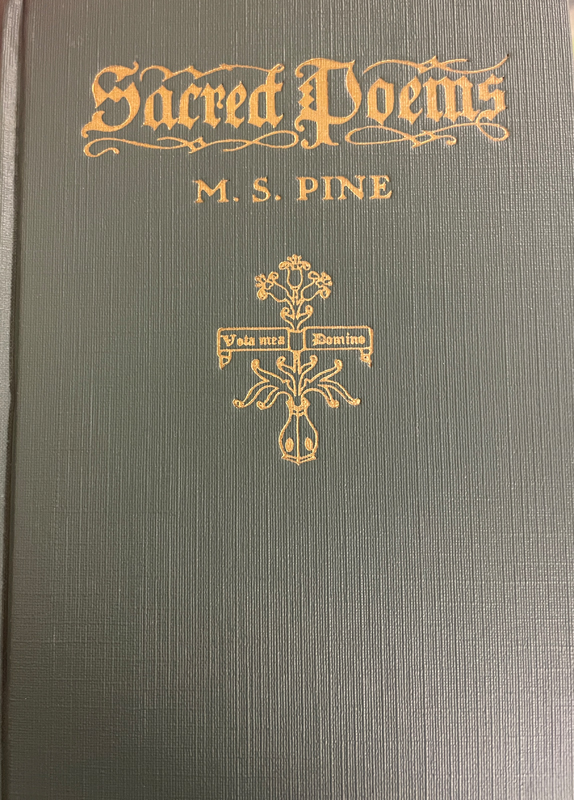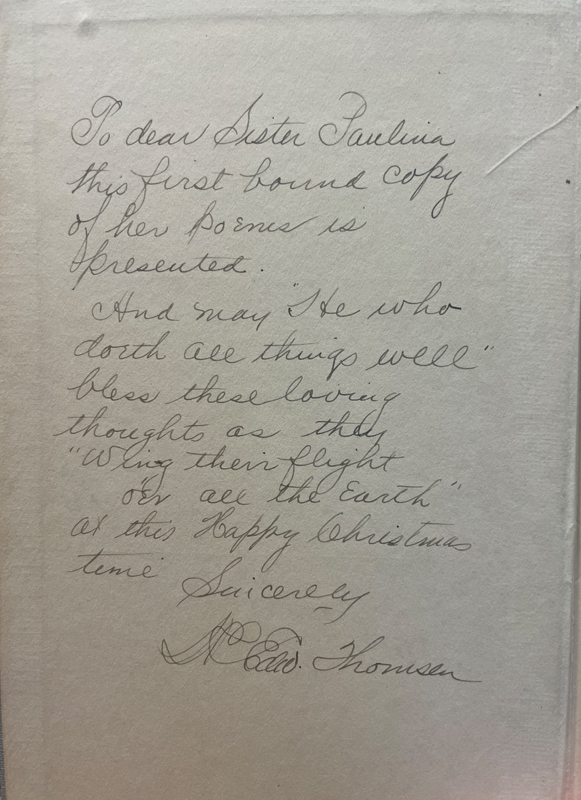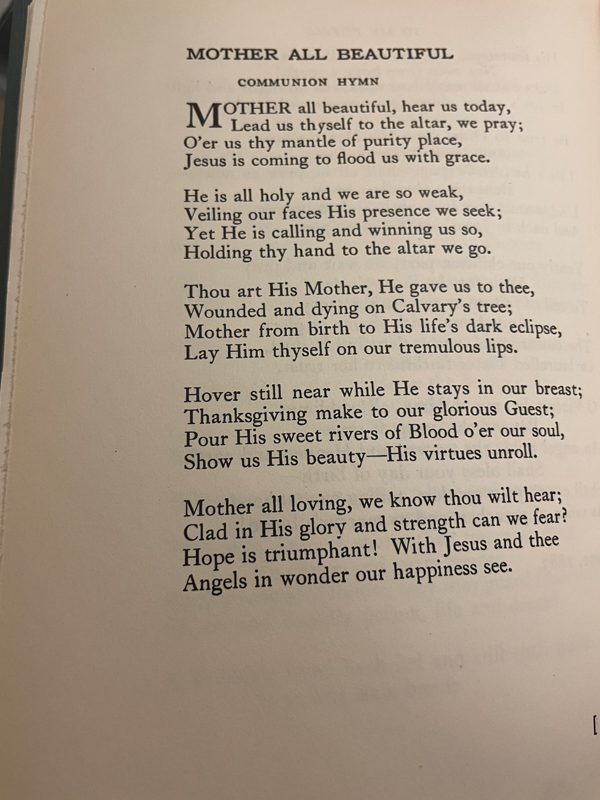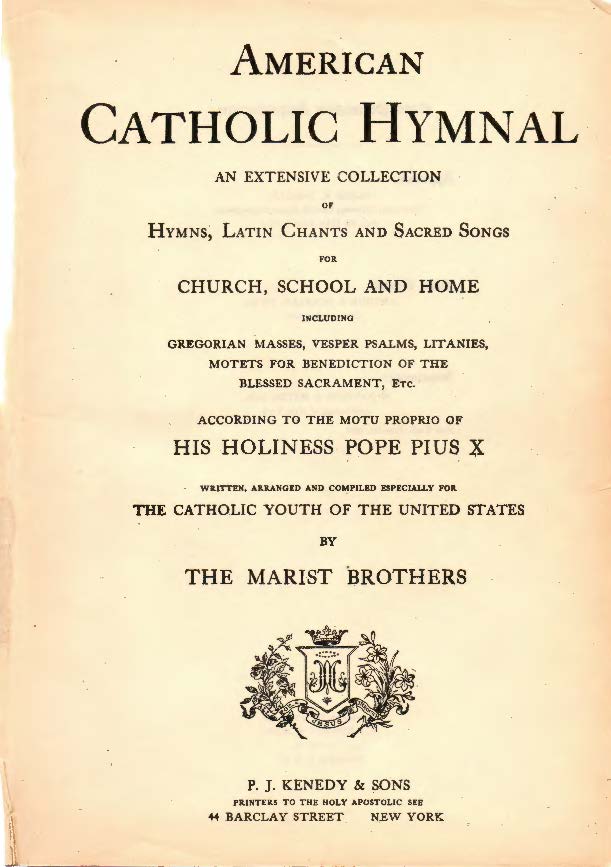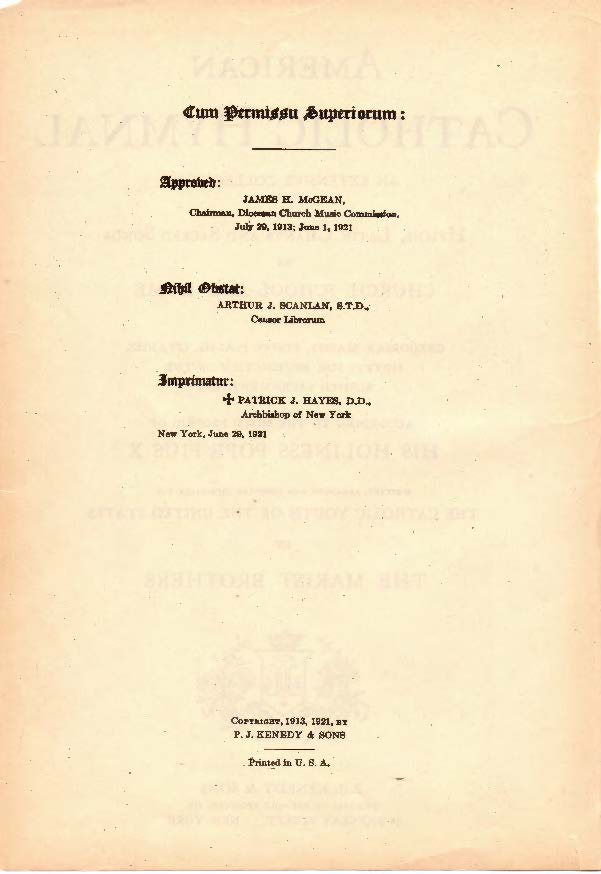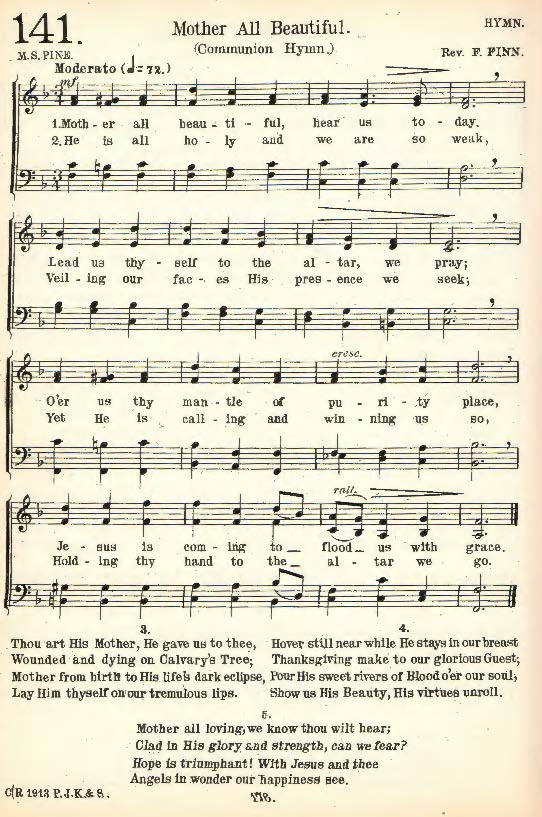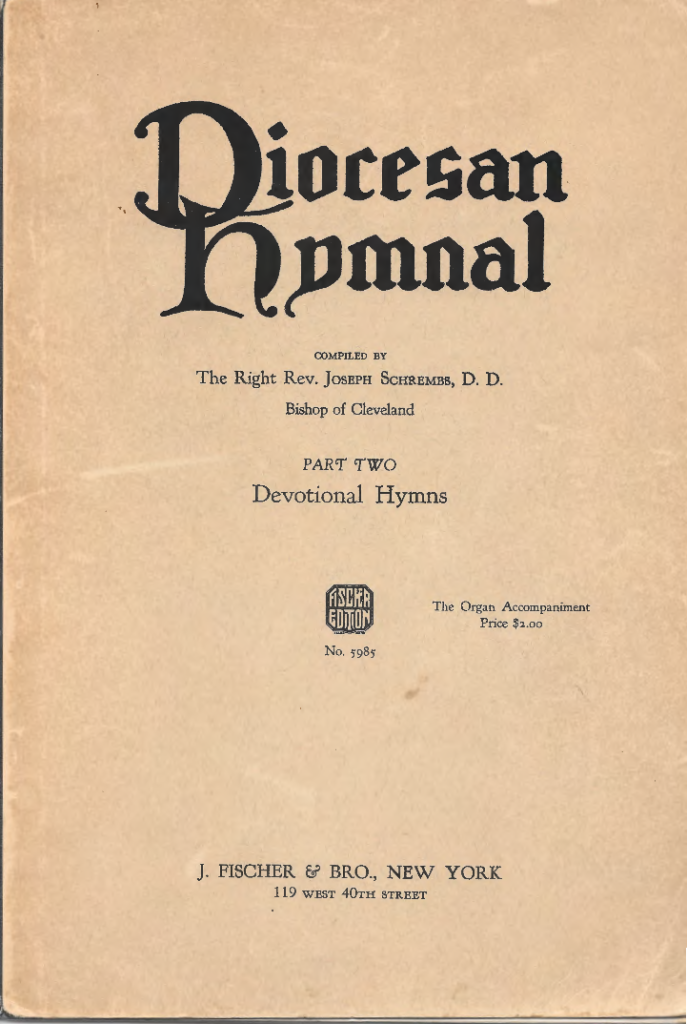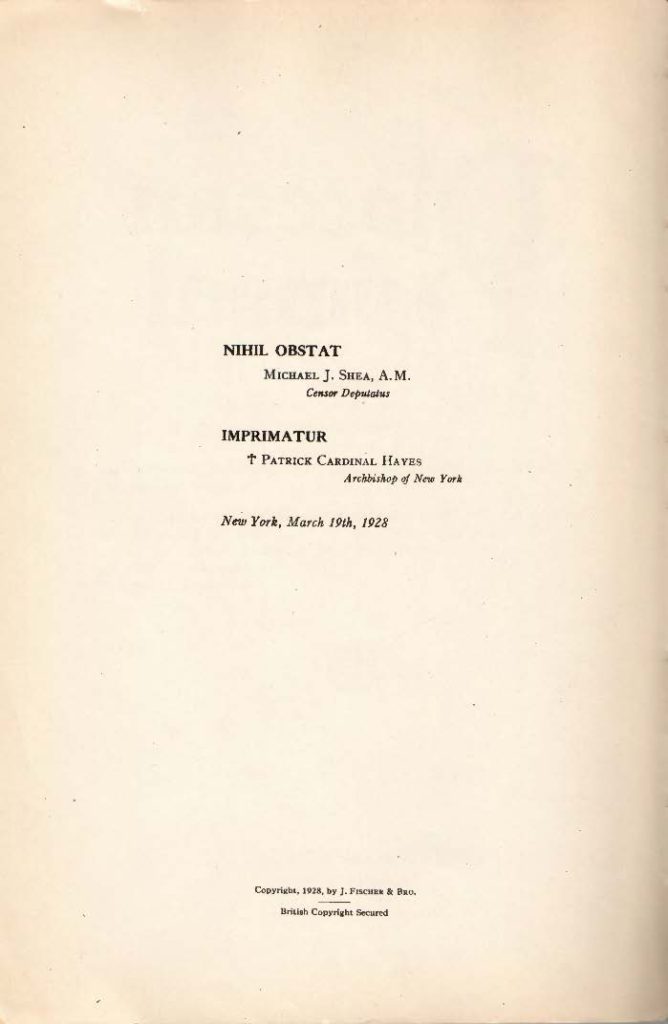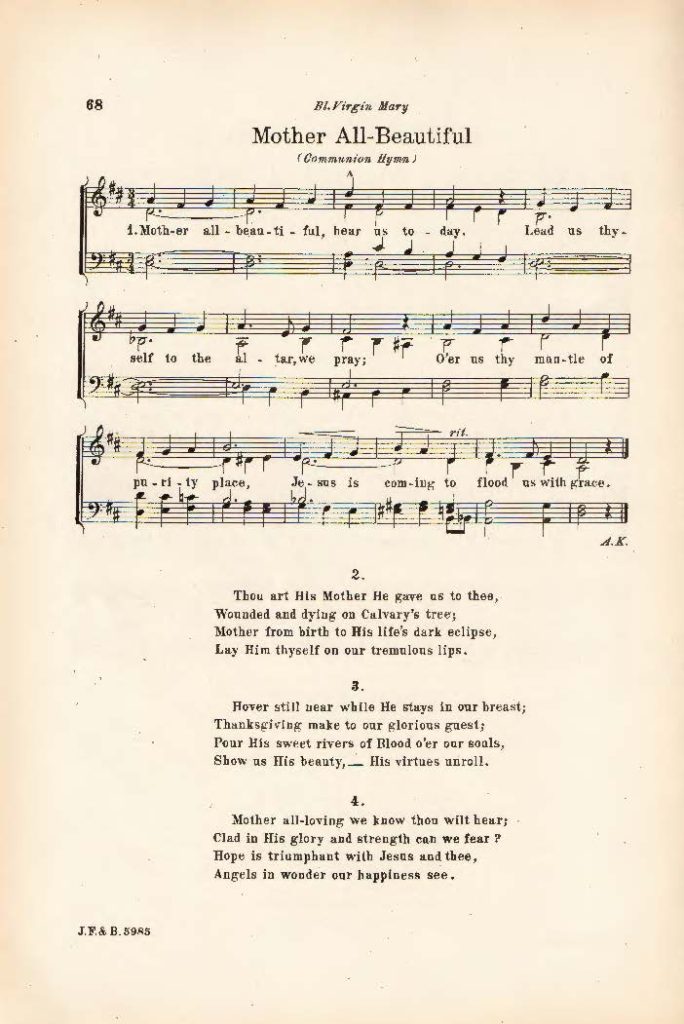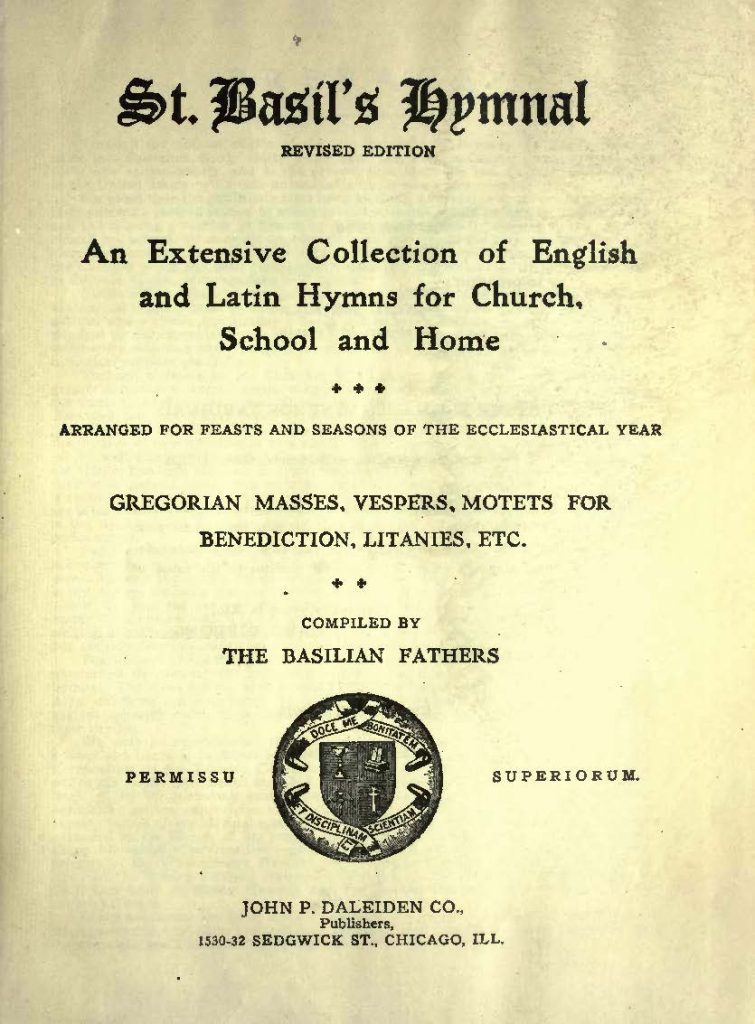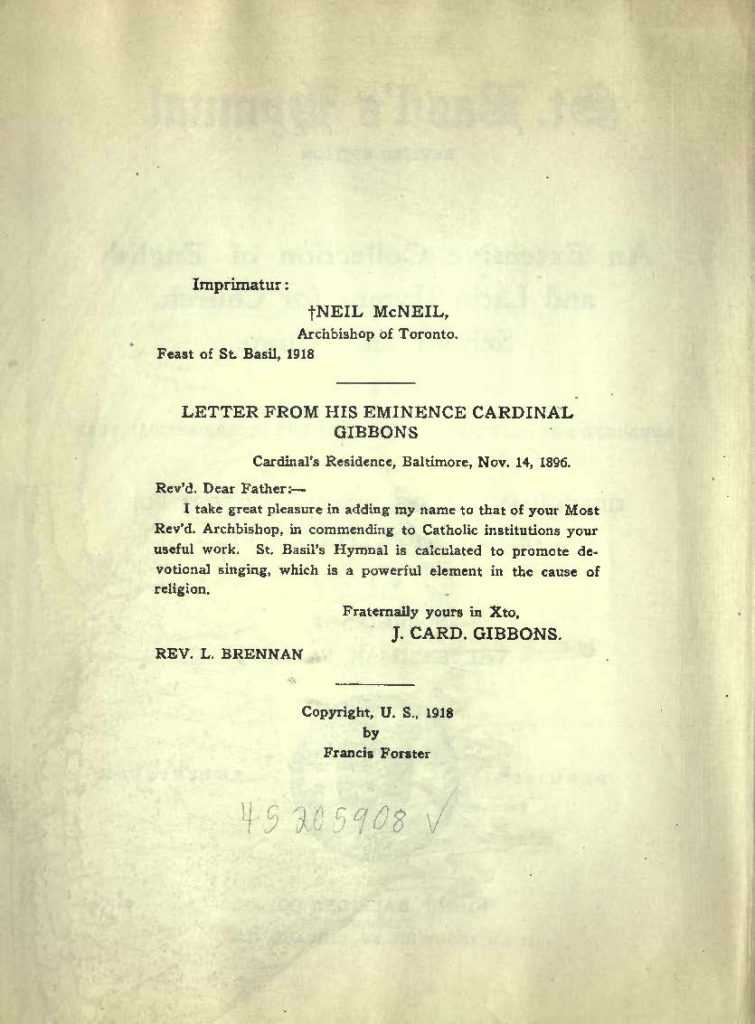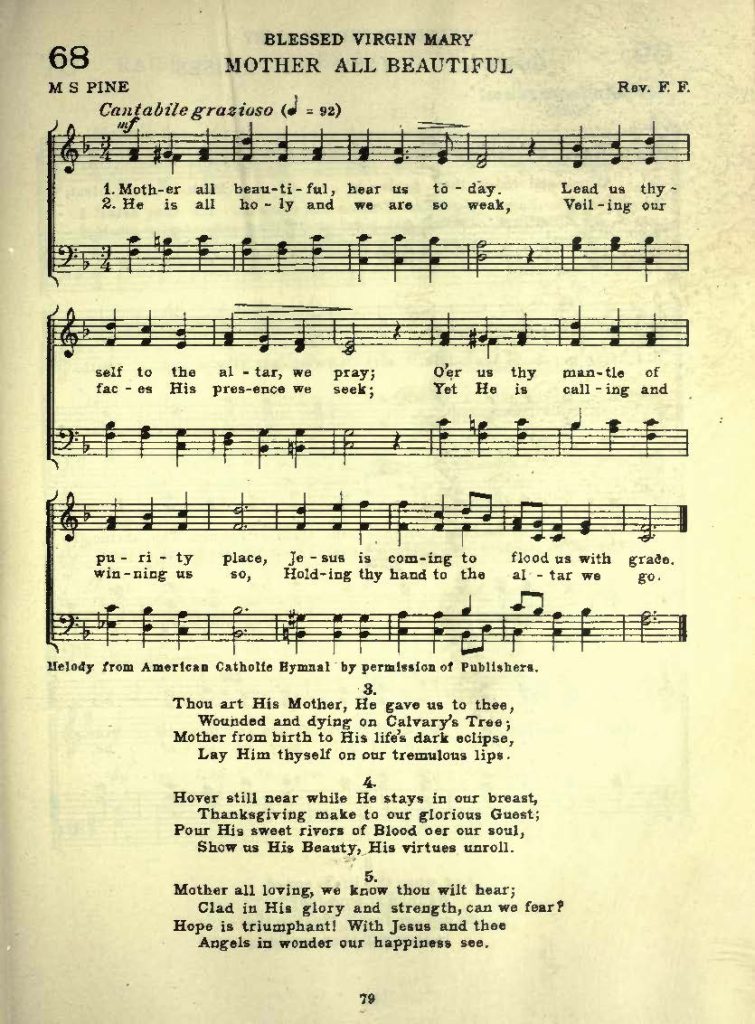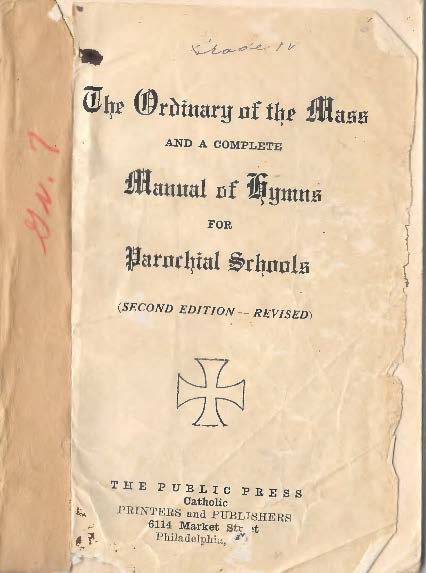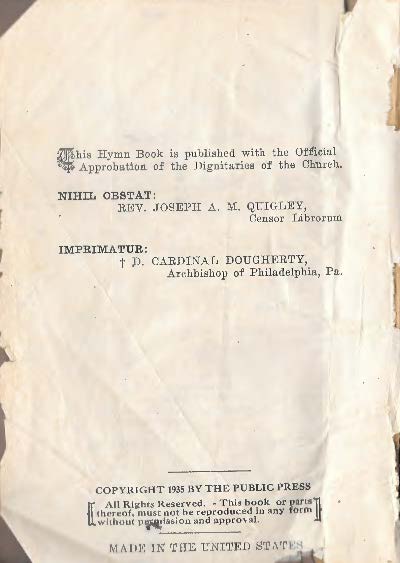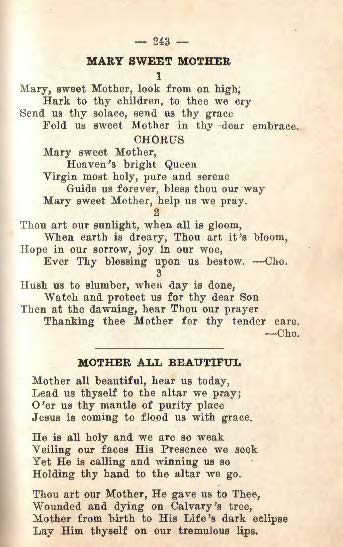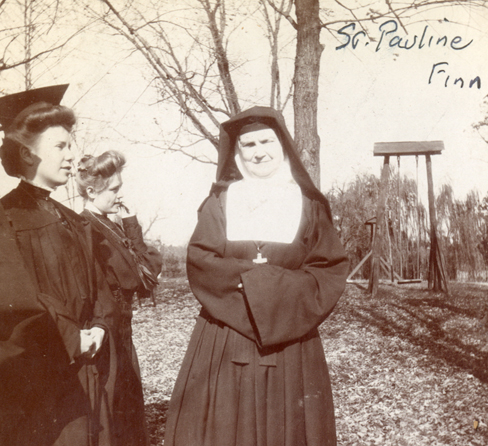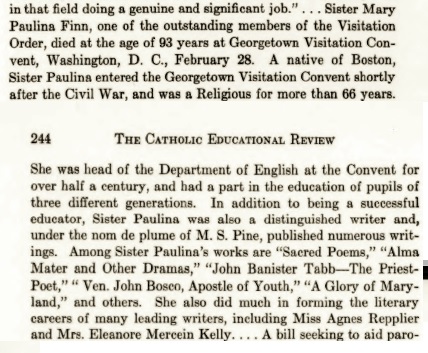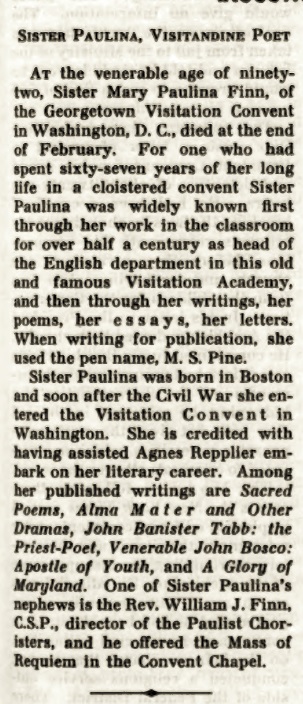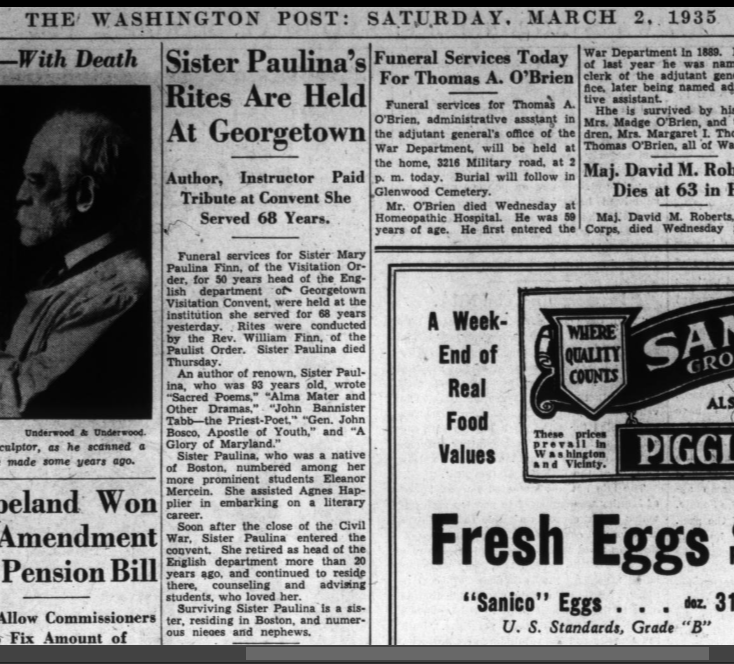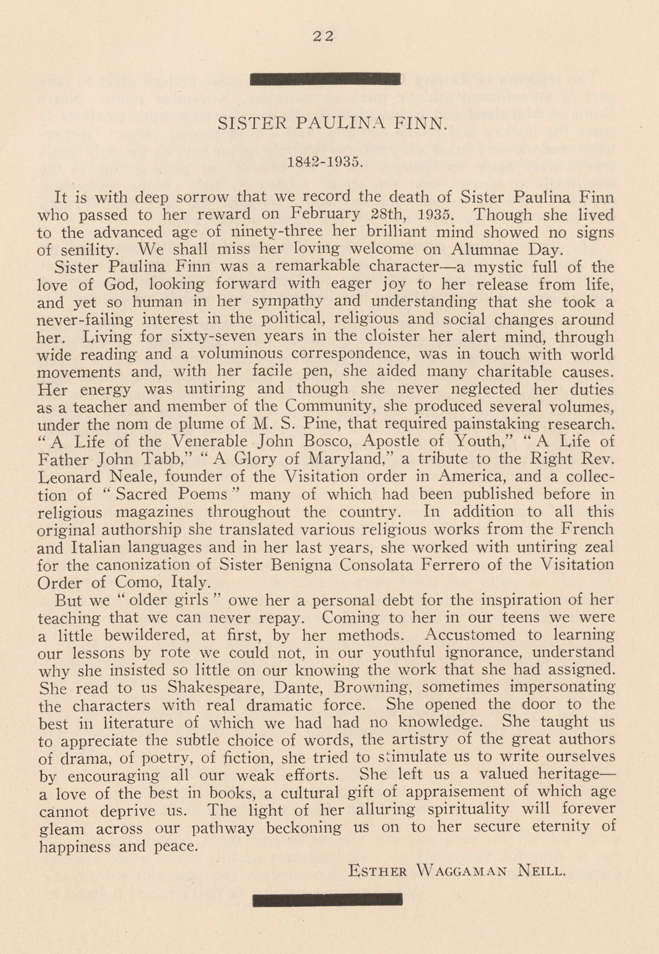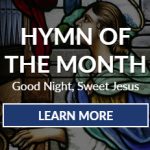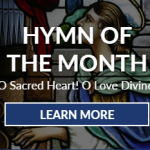This hymn was written by M.S. Pine, a pseudonym for Sister Mary Paulina Finn, VHM (1842-1935), from the Georgetown Visitation Convent in Washington, D.C. Sister Paulina was born from a prominent Catholic family who lived in Boston. Soon after the Civil War, in 1868, she entered the Visitation Convent. She is credited with having assisted Agnes Repplier embark on her literary career. Agnes was illiterate until the age of ten when she received mentoring from Sister Paulina. Agnes would later go on to become one of America’s leading discursive essayists.
Sister Paulina was head of the English Department at the Convent for over half a century and had a great influence in the education of her pupils. Among her students who would become well-known influential literary figures after their years at Visitation were Eleanor Mercein Kelly and Harriet Monroe. Eleanor published several novels and numerous short stories, some of which appeared in films and on Broadway. Harriet became the founder of Poetry: A Magazine of Verse, which remains in publication today as Poetry.
Sister Paulina was also the Aunt to Father William J. Finn, C.S.P., who was the director of the Paulist Choristers, a famous Catholic group of singers who performed weekly on national radio. Catholic radio programs were extremely popular before the age of television and included an audience of tens of millions of Americans every week.
Sister Paulina was a distinguished writer and under her pseudonym M.S. Pine published various writings including Sacred Poems; Alma Mater and Other Dramas; the Venerable John Bosco, Apostle of Youth; A Glory of Maryland, John Banister Tabb – The Priest Poet, and others. From the Georgetown Visitation Monastery Archives in Washington, D.C., I was provided with copies from the first bound copy of her Sacred Poems, published in 1924, with an inscription from the printer Mr. Thomsen of the Thomsen-Ellis Company. (Click on any image to enlarge)
Sister Paulina is known to have written the lyrics to at least ten different hymns most of which appear in the AMERICAN CATHOLIC HYMNAL compiled by The Marist Brothers and published by P. J. Kenedy & Sons, in 1913 and 1921. Her hymns include:
- #26 Soul of Jesus, Guest For Me
- #107 Only Thee, My Jesus
- #141 Mother All Beautiful (Communion Hymn)
- #177 O Jesus, Mary, Joseph! (The Holy Family)
- #208 O Jesus, Jesus Throned On High (Our Lord in the Blessed Sacrament)
- #262 My Soul, What Can I Render The Lord?
- #269 God of Peace and Love
- #280 Hail, Ever-Blessed Day! (Consecration to the Blessed Virgin)
- #295 We Leave Thy Shrine, O Mother Cherished
- #297 With Jesus, Mary’s Name (‘Tis holy Joseph’s name)
In addition, the hymn Mother All Beautiful also appeared in the following Catholic hymnals: The DIOCESAN HYMNAL Part Two compiled by Cleveland, Ohio Bishop Joseph Schrembs, D.D.; the 1918 ST. BASIL’S HYMNAL REVISED EDITION, and the 1935 edition of THE ORDINARY OF THE MASS AND A COMPLETE MANUAL OF HYMNS FOR PAROCHIAL SCHOOLS.
The DIOCESAN HYMNAL Part Two was published by J. Fisher & Bro., of New York in 1928. Bishop Schrembs compiled three hymnals including, The Diocesan Hymnal Part 1 which was published in 1926 consisting of Communion and Confirmation Hymns. Part 2 consisting of Devotional Hymns, and a third, The Eucharistic Hymnal published in 1935, embodied hymns taken from Part 1 & Part 2.
He was elevated to the office of Archbishop in 1935 and was the Promoter of the Seventh National Eucharistic Congress and Protector of the Priests’ Eucharistic League in the United States. He was himself a musician and composed several hymns and was instrumental in producing manuals of Gregorian Chant and Catholic editions of music text books for elementary schools. He is also considered one of the pioneers of Catholic radio. He spoke frequently on local radio stations giving sermons and catechetical instructions often followed by the singing of hymns for which he composed the tunes. He was instrumental in persuading the National Council of Catholic Men (NCCM) to sponsor the Catholic Hour that began broadcasting in 1930. This weekly radio program reached a large national audience.
The music for the hymn was composed by Bishop Schrembs and harmonized by Alfred Kalnins.
The ST. BASIL’S HYMNAL was the most widely used Catholic hymnal during the first half of the 20th century period. The first edition was published in 1888 and contained Daily Prayers, Prayers at Mass, Litanies, Vespers for All the Sundays and Festivals of the Year, a Selection of over Two Hundred Hymns, Office and Rules for Sodalities of the Blessed Virgin Mary, Preparation for and Prayers after Confession and Holy Communion.
The hymnal was compiled and edited by Father Lawrence Brennan, C.S.B., (1847-1904). Father Brennan was appointed as the first full-time pastor of St. Basil’s Church of Toronto. The St. Basil’s hymnbook spread quickly across Canada and the United States and became a standard hymnal in many parishes. In 1904, all the plates, manuscripts, and partially finished editions were destroyed in a disastrous fire, and shortly after this fire, the pastor of St. Basil’s Church of Toronto, Father Lawrence Brennan died.
A cursory look at the history of St. Basil’s hymnal and it’s various editions would suggest that there were 41 different printings. However, this is not the case, the Fifth edition printed in 1896 was the last edition before the great fire and we don’t see another edition until the Tenth which was printed in 1906. The next major revision of the St. Basil’s Hymnal occurred in 1918. This revised edition is highly sought after by collectors and hymn researchers. It is also the only edition where we find the hymn Mother All Beautiful, which was reprinted by permission from The American Catholic Hymnal.
THE ORDINARY OF THE MASS AND A COMPLETE MANUAL OF HYMNS FOR PAROCHIAL SCHOOLS, was published by The Public Press of Philadelphia in 1935. My copy is a word-only collection measuring about 4 inches wide and approximately 6 inches tall and contains 527 pages with Approbation approval by the Censor Librorum and Archbishop of Philadelphia, Pa. (Click on any image to enlarge)
Sister Paulina died at the Georgetown Visitation Convent toward the end of February in 1935 at the venerable age of ninety-two. She had given nearly sixty-eight years of her life to the convent. Her nephew, Father William Finn conducted the funeral rites in the Convent Chapel.
My research found a few articles with obituaries about Sister Paulina. One source is The Catholic Educational Review, an American Journal of Catholic Education published by the Catholic University of America from 1911 to 1969. The second is an article from The Catholic World, a general literature and science magazine published monthly by the Paulist Fathers. It ran from 1870 to 1996.
Also, an obituary article from The Washington Post dated March 2, 1935. And lastly, an obituary from the Alumni Publication in 1935 with a special anecdote from one of her many students. (Click on any image to enlarge)
Reflection
It is evident from these sources that Sister Paulina’s life and contributions were deeply valued by her community, leaving a lasting impact that continued to be recognized posthumously. Her devotion to faith and education is reflected in the hymns she composed, which continue to inspire and comfort believers. The hymn I selected, penned by Sister Paulina and musically composed by Father William J. Finn, O.S.P., encapsulates this enduring legacy. I am particularly drawn to the third verse which reminds me that she, Mary, is His mother, but also our mother. Thou art His Mother, He gave us to thee, a reference to the gospel of John 19:26-27.
Today, some musicians use missalette guides for hymn choices, while others aim to revive Gregorian chant, both neglecting the educational value of traditional Catholic hymns. There was a time when Communion hymns of this quality were consistently part of the choir and parish repertoire.
This hymn contains verses that are both beautiful and prayerful, which remain relevant even today, and can resonate with individuals of all ages. Please take a moment to reflect on the verses. Do you see any that reach out to you? Do you see any that teach you or remind you of your Catechism or the teachings of the Catholic Church? If you do, I think you will agree that Sister Paulina is still teaching us today, just as she did those many years ago.
A special thank you to Peter Meggison, producer of The Devotional Hymns Project, for granting permission to use a recording of Mother All Beautiful performed by the Cor et Vox Singers of St. John Cantius Church, Chicago. Also, I have included a computer-generated sound file of the melody composed by Bishop Schrembs.

